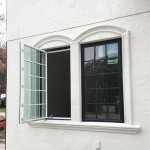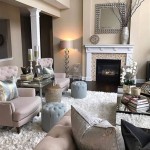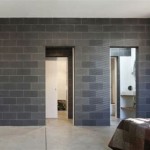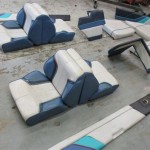How Much Do Interior Designers Charge?
Determining the cost of interior design services can be a complex undertaking. Several factors influence the final price, making it essential for clients to understand the various pricing structures and considerations involved. This article will delve into the common fee arrangements used by interior designers and explore the elements that contribute to the overall expense of a design project.
Common Fee Structures in Interior Design
Interior designers utilize a range of fee structures, each with its own implications for the client's budget. Understanding these structures is crucial for making informed decisions and selecting a designer whose pricing aligns with budgetary constraints.
Hourly Rate: This is perhaps the most transparent pricing model. Designers charge a set hourly rate for their time spent on the project. This rate can vary widely depending on the designer's experience, location, and specialization. Tasks typically billed hourly include consultations, space planning, material selection, project management, and site visits. This model is often suitable for smaller projects or when the scope of work is uncertain.
Fixed Fee: Also known as a flat fee, this arrangement involves the designer providing a single, all-inclusive price for the entire project or a specific phase. This requires a well-defined scope of work and a detailed project plan. A fixed fee can offer budget predictability, but it's important to ensure the contract clearly outlines what is included in the price. Any changes to the scope of work may result in additional charges.
Percentage of Project Cost: Under this model, the designer's fee is calculated as a percentage of the total cost of the project, including furniture, materials, labor, and other expenses. The percentage typically ranges from 10% to 20%, but can vary even more based on the project size, complexity, and the designer's experience. This structure aligns the designer's interests with the client’s, as a more elaborate and expensive project translates to a higher fee. Transparency in cost tracking is essential with this model.
Cost Plus: This pricing structure involves the designer charging the client the actual cost of goods and services (e.g., furniture, materials) plus a markup. The markup percentage can vary but typically ranges from 20% to 40%. While seemingly straightforward, it requires meticulous record-keeping and transparency from the designer. Clients should request detailed invoices and be aware of the markup applied to each item.
Retail Model: Some interior designers operate showrooms or retail spaces and primarily generate revenue through the sale of furniture, accessories, and other decor items. In this model, the design services may be offered at a reduced rate or even for free, with the expectation that the client will purchase the majority of the furnishings through the designer. This structure is suitable for clients who are primarily interested in purchasing new furniture and decor.
Hybrid Models: Many designers combine elements of different fee structures to create a customized pricing model that meets the specific needs of the project. For example, a designer might charge an hourly rate for initial consultations and space planning, and then transition to a fixed fee for the remaining phases of the project. This flexibility allows for a more tailored approach to pricing.
The selected fee structure significantly impacts the overall cost and budget management. Clients should carefully consider the advantages and disadvantages of each option before making a decision.
Factors Influencing Interior Design Costs
Beyond the chosen fee structure, a multitude of factors can significantly affect the final cost of interior design services. These factors relate to the project scope, complexity, location, and the designer's qualifications and experience.
Project Scope and Size: The size of the space being designed or renovated directly impacts the time and resources required. A large-scale project involving multiple rooms or an entire house will naturally cost more than a small-scale project focused on a single room. The scope of work also matters; a full-scale renovation involving structural changes will be more expensive than a simple decorating project.
Project Complexity: The complexity of the design requirements can significantly influence the cost. Projects that involve intricate custom designs, specialized finishes, or complex engineering challenges will require more time, expertise, and potentially specialized contractors. For example, designing a custom kitchen with unique cabinetry and appliances will be more expensive than selecting standard options.
Geographic Location: Interior design fees can vary significantly depending on the geographic location. Designers in major metropolitan areas with a high cost of living typically charge higher rates than those in smaller towns or rural areas. Similarly, the cost of materials and labor can also vary by location, affecting the overall project budget.
Designer's Experience and Expertise: The level of experience and expertise of the interior designer plays a significant role. Highly experienced and sought-after designers with a strong portfolio and established reputation typically command higher fees. Designers specializing in a particular style (e.g., modern, traditional) or project type (e.g., residential, commercial) may also charge premium rates.
Materials and Finishes: The selection of materials and finishes significantly impacts the overall cost. High-end materials, such as imported marble, designer fabrics, and custom-made furniture, will naturally increase the project budget. Conversely, selecting more affordable alternatives can help to reduce costs.
Contractor Fees: If the project involves renovations or construction, contractor fees will be a significant component of the overall cost. The fees charged by contractors can vary depending on their experience, specialization, and location. It's essential to obtain multiple quotes from reputable contractors to ensure competitive pricing.
Project Management: Some interior designers offer project management services, which involve overseeing the entire project from start to finish, including coordinating contractors, managing schedules, and ensuring quality control. These services can add to the overall cost, but they can also save time and stress for the client.
Customization: Custom-designed elements, such as built-in cabinetry, custom furniture, and unique lighting fixtures, will increase the cost. The more customization involved in a project, the higher the overall expense.
Contingency Funds: It is prudent to allocate a contingency fund, typically 10-20% of the total budget, to cover unexpected expenses or changes that may arise during the project. This helps to avoid financial surprises and ensures that the project can be completed without compromising on quality.
Budget Considerations and Cost-Saving Strategies
Establishing a realistic budget is crucial for a successful interior design project. Clients should carefully consider their financial resources and prioritize their needs and wants before engaging a designer. Several cost-saving strategies can help to keep the project within budget without sacrificing quality or style.
Define the Scope of Work Clearly: A well-defined scope of work is essential for accurate cost estimation. Clearly communicate your needs, preferences, and budgetary constraints to the designer from the outset. A detailed design brief will help the designer to understand your vision and develop a realistic project plan.
Prioritize Needs Over Wants: Identify the essential elements of the design and prioritize them based on your budget. Focus on investing in high-quality items that will last, such as durable furniture and well-made cabinetry. Consider delaying or phasing in non-essential upgrades or decorative elements.
Shop Around for Materials and Finishes: Obtain quotes from multiple suppliers for materials and finishes to ensure competitive pricing. Consider using less expensive alternatives for certain items without compromising on quality or aesthetics. For example, using engineered hardwood flooring instead of solid hardwood can save money without sacrificing durability.
Consider Refurbishing or Repurposing Existing Furniture: Instead of purchasing all new furniture, consider refurbishing or repurposing existing pieces. This can be a cost-effective way to update your space while retaining familiar items.
DIY (Do-It-Yourself) Projects: Consider tackling some of the simpler aspects of the project yourself, such as painting, wallpapering, or installing shelving. This can help to reduce labor costs and give you a sense of involvement in the project.
Phased Approach: If the budget is limited, consider implementing the design in phases. Focus on the most important areas first and gradually complete the remaining phases as funds become available. This allows you to spread out the expenses over time.
Negotiate Fees: Don't hesitate to negotiate fees with the interior designer. Discuss the project scope and budget openly and ask if there is any flexibility in the pricing. Some designers may be willing to offer discounts or alternative fee arrangements.
Obtain Multiple Quotes: Obtain quotes from several interior designers before making a decision. Compare their fees, services, and portfolios to find the best fit for your needs and budget. This ensures that you are getting a fair price for the services offered.
Read the Contract Carefully: Before signing a contract with an interior designer, carefully review all the terms and conditions. Ensure that the scope of work, fees, payment schedule, and other important details are clearly outlined. Seek legal advice if necessary.
By carefully considering these budget considerations and cost-saving strategies, clients can manage their interior design project effectively and achieve their desired aesthetic without exceeding their financial limits.

Fixr Com Interior Designer Cost Fees

How Much Does An Interior Designer Cost

How Much Does It Cost To Hire An Interior Designer

How Much Do Interior Designers Charge Emily A Clark

How Much Do Interior Designers Charge

How Much Does An Interior Designer Cost In 2024 Decorilla

How Much Does An Interior Designer Cost In 2024 Decorilla

How Much Does An Interior Designer Cost In 2024 Decorilla

Interior Renovation Cost Design

How Much Does An Interior Designer Cost The Complete Guide
Related Posts








